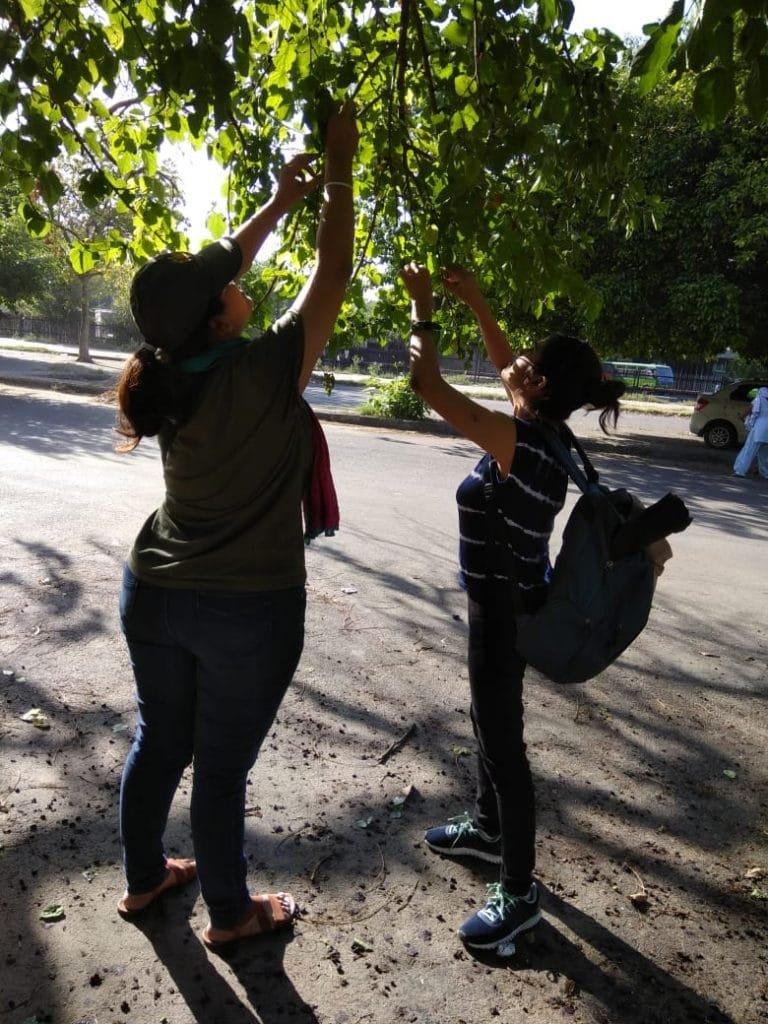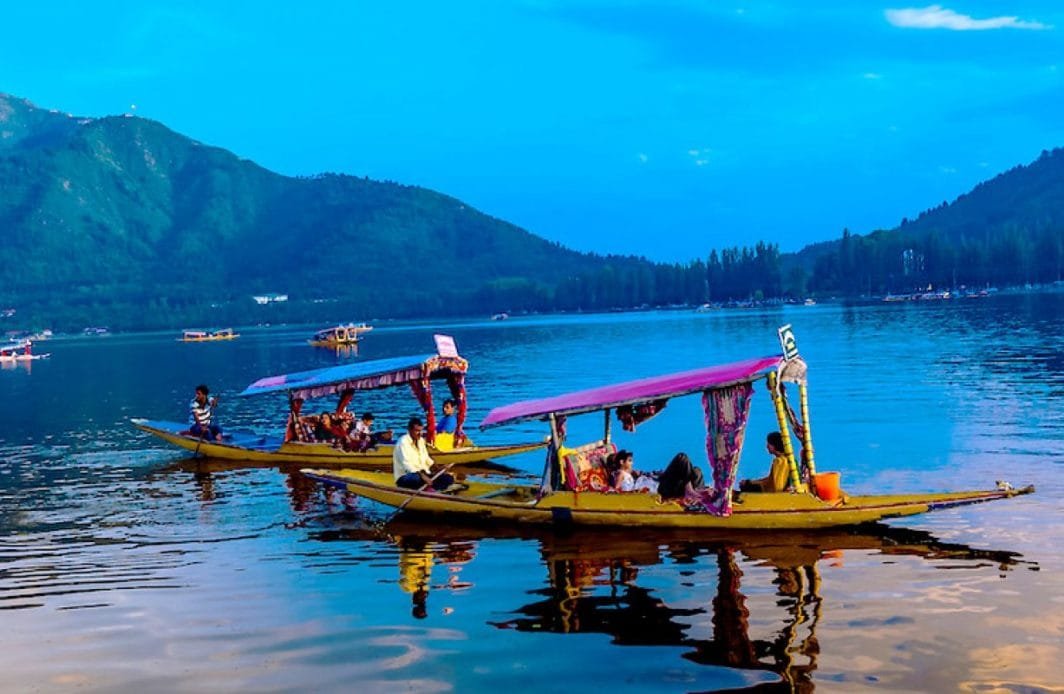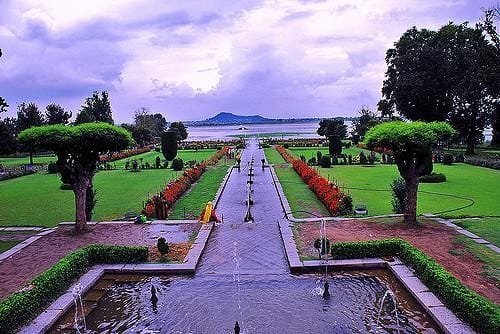I have vacations, I can go anywhere, I can do anything. Yet, the travel bug in me decides to travel 1170kms to Bangalore, for a trek, to a place experiencing the highest rainfall in the Western Ghats. Rolling green hills laid out in a mosaic of sprawling grasslands, cloud kissed mountains, forest trails, bamboo shrubs, and a dozen waterfalls, all of these tricked me to leave the comfort of my home and embark on a monsoon trek to Kudremukh, the Himalayas of the South.
ABOUT THE PEAK
Coming under the Chikmagalur District of Karnataka, Kudremukh is the third highest peak after Mullayanagiri and Bababudangiri with a height of 1894m from the mean sea level. Literally meaning ‘horse-face‘ in Kannada, Kudremukh Peak boasts some of the most beautiful views of Western Ghats. The trek to Kudremukh Peak is one of the longest treks of Karnataka with a distance of around 10 km one-way.
Review: Basic Skiing Course at JIM & WS- Ski Out Your Heart
THE JOURNEY
It all started on a Friday night, when the three of us, me, my sister who had come from Chennai and our friend in Bangalore, boarded a bus arranged by a trekking company, with a bunch of odd people. We got the absolute last seats of the bus. When we reached our destination in the morning, our tailbones were acquainted with all the potholes and speed breakers on the way.
At the base village, we boarded a jeep. Somehow surviving the bone-rattling ride, we reached at our homestay in Mullodi, where we freshened up and had our breakfast. We were handed a packet of tamarind rice, which was to be our lunch. By the time our trek guide briefed us, dark clouds had begun to cover the sky. It looked like a storm was heading our way.

THE KUDREMUKH TREK
How to become a tourist guide in India
After having walked about half a kilometer, we reached the check post of Kudremukh National Park, which is the entry point to the mountain ranges. After walking an initial heavily stony muddy trail, I realized this trek was not going to be an easy feat as the rains had made the path quite slippery.
An important topic of discussion among us was our soon-to-be-companion, Leeches! Everyone shared their own theories and experiences of their encounters with these blood-sucking creatures. All of this discussion did little to lessen our anxiety about the slimy, icky looking slugs. Whilst walking our eyes were continuously glued to the ground, fearing that even a minute of distraction might make us a delicious lunch for the leeches lurking around.
The green carpets of grasslands soon gave way to stretches of evergreen Shola forests, so dense that even the sun rays could hardly penetrate. We crossed our first river here. But none of us dared to hang around to admire the sheer beauty of the variety of trees, whistling birds, rustling leaves and crackling twigs, so as to avoid the creepy creatures from catching up on us. But there was no escape from them! Now and then, we flicked the leeches off each other’s bodies, meanwhile hoping that one of them has not found its way into our socks or onto the back of our neck.
By now, what was drizzle in the morning had converted into a heavy downpour. To shield from the rains, everyone had put on their ponchos and rain gears. And as it so happened that my sister and I, instead of packing ponchos or rain jacket, had packed our school time raincoats with us! Yes, the one with transparent material, floral print, and a funny cap on top! Embarrassed, we tried to avoid putting them on as long as possible, but later when we could no further bear the rains, we, too, geared up in our raincoats and started walking towards our destination.
However, one good thing that happened was, somehow the number of leeches that managed to find a way to our bodies was way lesser than our fellow trek mates who were wearing ponchos and rain jackets! We blessed ourselves for those funny looking raincoats of ours!
Our expectations of clicking spectacular pictures of our trek to Kudremukh and uploading them on social media went down the drain, as the rains had no intention of stopping. Hardly anyone paused to take in the view of the majestic mountains, we had read and googled so much about, as all we had in front of us was a thick fog of grey. Besides, the incessant rains, the constant lookout for leeches, gusting winds, shivering hands, and our runny noses made it very difficult for us to concentrate on anything else other than our air-short lungs!

In the middle somewhere, we stopped to have our lunch. We opened our rice packets and started eating with our cold, moist hands. We gobbled our food because the rain and wind gushing around us, coupled with the fear that a leech might crawl onto our torso, made us forget all our table manners!
Somewhere between asking for “Aur kitna durr hai?” and Huffing and puffing for air, the three of us managed to reach the top of the peak! We had long back given up the hopes to have mesmerizing views of green velvety mountains. So when at the top, a vacuum of white greeted us, we were not disappointed.
At the top, the winds blew even more strongly, threatening to carry us off the peak. We sat down there for a while and gave our crying feet, knees, and lungs a break. On our way down, the modest shelter of our raincoats did little to provide us any respite from the relentless rains and the strong winds.
THE DESCEND
The way down was even worse because the terrain had become extremely slippery and slushy. Even after being extra cautious, we slipped a few times. Everybody was helping and looking out for each other. The rains lashed harder and did not stop until we successfully completed the 22kms trek and were back at the homestay.
After reaching the room, we removed our drenched, mud-covered clothes and tended to the leech punctures. Some people had it easy, while for others, the blood kept oozing for a couple of hours. We decided it unanimously to cancel the next day’s plan of visiting the coffee plantations and directly head back home, the first thing in the morning. The next day in Bangalore, we tended to our sore bodies and attempted to feel human again.
This entire Kudremukh trek was an experience of a different kind! The feeling of having survived the blood-sucking leeches, lashes of rain and winds and having trekked 22kms were enough for us to proclaim ourselves superhuman!
BEST TIME TO VISIT
For all the monsoon trekking enthusiasts, if the idea of all the miseries we went through appeals to you, then head to Kudremukh between June and August.
But for others, Kudremukh trek from October to February promises “visible” picturesque views of the rolling hills and verdant valleys, a little easier climb and of course, leech less paths!



















